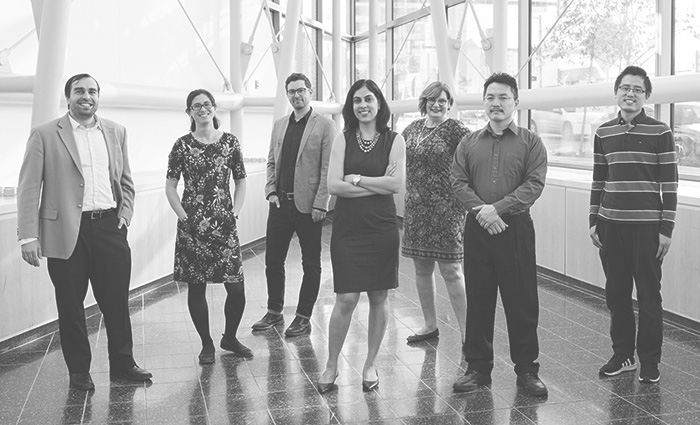







Ioannis Savidis
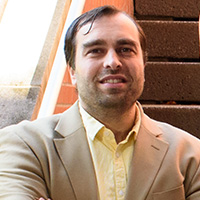
Associate Professor
Electrical and Computer Engineering
Recipient of a 2018 CAREER award from the National Science Foundation, Savidis is currently working on federally funded projects for the Air Force Research Laboratory, the Department of Energy, and the Office of Naval Research, each tackling a different approach to integrated circuit security.
PhD: University of Rochester
Lab: Integrated Circuits and Electronics (ICE) Design and Analysis Laboratory
Research: The ICE Lab advances state of the art high performance and mobile computing platforms through research on circuit techniques and methodologies that target 1) improved digital and mixed-signal circuit performance while minimizing power consumption and area, 2) providing work-load aware on-chip power management, 3) enhancing power and clock delivery for heterogeneous 2-D and 3-D integrated circuits and systems, and 4) securing digital and analog integrated circuits from IP theft, reverse enginering, and hardware Trojan insertion.
What do you like most about teaching?
“It is the idea that I can discuss and teach a topic that I really love to a group of students who hopefully will … maybe not love, but at least come to appreciate that the topic is pretty exciting and of high importance. Also, I like seeing students have that ‘ah ha!’ moment when a topic they were struggling with suddenly makes sense.”
How can students involve themselves in your research?
“I think the biggest thing is to show an interest. Come talk to me and let’s chat about your interests and goals. If we see some common objectives and interests, then we can discuss working on research that will work for the both of us. The same applies for graduate students, although there I am a little bit more demanding in that I expect a master’s thesis or a conference publication.”
Briefly describe one undergraduate course that you teach.
“ECEC 471 – Introduction to VLSI Design. This is an introductory course in the field of Very Large Scale Integration (VLSI) circuit and systems design. An understanding of VLSI integrated circuits is achieved through circuit design and analysis. This course focuses exclusively on digital CMOS VLSI circuit and systems design, although some topics on mixed-signal circuits are also addressed.”
X
Maureen Tang
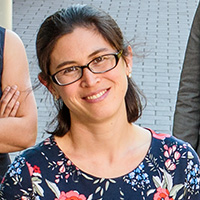
Assistant Professor
Chemical and Biological Engineering
With a National Science Foundation CAREER award, an National Science Foundation grant for work on six-electron water oxidation, an Early-Career Research Achievement award, and a New Directions grant from the American Chemical Society Petroleum Resource Fund all within the past two years, Tang is bringing remarkable advances to the field of energy storage.
PhD: University of California, Berkeley
Lab: Tang Research Group
Research: Every solution in the field of energy storage must have acceptable power, energy, lifetime, safety, and cost aspects for the technology to succeed. Tang’s research aims to improve these aspects from the device down to the nanoscale. Combining fundamental experimental and theoretical studies of chemical transport and kinetics with synthesis, characterization, and simulation of materials and architectures, the materials and methodologies developed by Tang’s lab strive to enable the rapid development and implementation of next-generation energy storage and conversion.
How would you describe your research?
“As a scientist, I like to solve puzzles about the natural world. As an engineer, I am drawn to problems with societal and economic importance. My research group combines these two roles by studying the transport and reaction mechanisms of electrochemical materials and systems. Electrochemical systems are one of the most promising routes for scalable electricity storage. Long-term storage is the Achilles’ heel of intermittent renewables like wind and solar, because electrical energy must be converted to thermal, mechanical, or chemical energy. No current technology can accomplish this task at scale. We think very carefully about a complicated system with many moving parts, distill the confusion down to a straightforward question, then generate a clever test to answer that question.”
What “tools” do engineers in your field need most?
“Critical thinking. Engineers need to be able to reason through a hypothesis with logic: ‘If X is the problem, then we should do Y and observe Z.’ This kind of reasoning is necessary for debugging code, fixing broken equipment, and identifying chemical mechanisms, so we do it every day. Technical details can be learned, but there is no substitute for a careful thinker.”
X
Matt Stamm
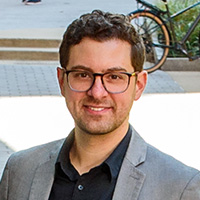
Associate Professor
Electrical and Computer Engineering
Engaging and zealous, Stamm has appeared at the SXSW festival and was recently one of two national experts consulted on the accuracy of a video widely circulated in the national media. His research in media forensics is supported by funding from the National Science Foundation, the Defense Advanced Research Projects Agency, the Army Research Office, and the Defense Forensics and Biometrics Agency.
PhD: University of Maryland
Lab: Multimedia and Information Security Lab (MISL)
Research: Signal processing, adversarial dynamics, machine learning, and the emerging field of information security and information forensics: developing techniques to detect multimedia forgeries.
What is your area of focus?
“I work in the field of Information Authenticity. One of the largest social challenges facing us today is the verification of our media, our images, and our videos. This field allows you to understand whether information is real or fake. There are very few places in the country right now that have the capability to teach this, and we’re one of them.”
What is the future of media forensics?
“Verifying our media does not need just a pure, technical solution. We need to develop the field along lines that allow for the input of those from other fields, like law, journalism, and policymakers. I could see at some point putting together a leadership institute for Information Authenticity and Disinformation that would rope all of these stakeholders in.”
What advice would you give students interested in MISL?
“To start with, you have to like math and engineering. But you also have to be interested in developing creative solutions to problems and addressing important socially impactful issues. You need to think about and be creative about the implications of this technology, and what could be some of the inadvertent consequences.”
X
Vibha Kalra
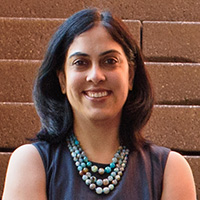
Associate Professor
Chemical and Biological Engineering
Kalra’s research focuses on developing Lithium-sulfur cathodes with the goals of further improving cycle life, reducing the formation of polysulfides, and decreasing cost. Recent funding awards include an NSF-PFI, an NSF GOALI, and a sponsored research and licensing agreement with a battery company.
PhD: Cornell University
Lab: Kalra Research Group
Research: Her research integrates advanced manufacturing with fundamental electrochemical study, in-operando spectroelectrochemistry, and device assembly and testing to develop nanofiber-based energy storage devices, specifically next-generation batteries and supercapacitors.
As quoted in a recent Drexel Now article:
“Our Li-S electrodes provide the right architecture and chemistry to minimize capacity fade during battery cycling, a key impediment in commercialization of Li-S batteries. Our research shows that these electrodes exhibit a sustained effective capacity that is four-times higher than the current Li-ion batteries. And our novel, low-cost method for sulfurizing the cathode in just seconds removes a significant impediment for manufacturing.”
What is your teaching philosophy?
“I believe that class participation, interaction, and student engagement are key to effective learning. I closely integrate lectures with out-of-the-box problems that students solve individually or in small groups, followed by a healthy class discussion about the key concepts involved. I believe a good teacher is one who can make complex ideas understandable to the students who may be struggling in class, while still providing a challenging learning environment for the strongest.”
X
Jennifer Atchison
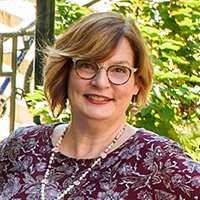
Assistant Teaching Professor
Mechanical Engineering and Mechanics
Each year, seniors participate in the college-wide program Senior Design. It culminates in written and oral presentations and in selections for the Celebration of Senior Design, in which nearly 700 students compete in a showcase of innovation and creativity. Atchison coordinates the massive program for MEM.
PhD: Drexel University
Role: Coordinator, Senior Design, MEM
What is Senior Design?
“The three-course senior design sequence gives our students the opportunity to integrate all the knowledge they have learned in the curriculum with the practical skills they have honed in their co-op experiences into one capstone project. Our students develop a simple problem statement, research customer needs, write specifications, develop concepts, prototype, test and iterate until they have a working prototype. Their projects are funded by industry, their co-op employers, ASME Philadelphia Section, Boeing, NASA Pennsylvania Space Grant Consortium, and the Botstiber Senior Design Competition.”
What makes a good project?
“The best projects usually have a multidisciplinary team, invested advisors, financial support and a topic the team is passionate about. Last year, the MEM team that took second place in the CoE Celebration of Engineering Design Competition with the project Automated ADA Curb Inspection had support from Riker Inc. to solve a real need for the company. Riker was responsible for the inspection and compliance for the American Disability Act sidewalk ramps. The state-of-the-art was a cumbersome manual inspection. Our students designed a semi-automated photogrammetry technique that improved the accuracy of the measurements and reduced the time it took to evaluate a ramp site. Riker is instituting their system. This team was notable not only for their smart technical solution but also for being a good example of how the discipline of mechanical engineering is embracing Big Data.
“Another team, SeaVital, went on to develop their business at a start-up accelerator, Spark Technology Center in Bucks County, PA. SeaVital is developing an unmanned aerial vehicle rescue platform to help identify and track people who fall overboard on large yachts and commercial vessels.”
What is your teaching/mentoring philosophy?
“In the junior year, I teach the process engineers follow when designing a product. By then, my students have already completed at least two co-ops. I try to help them connect the professional work they did in their co-op job with the theoretical process of the design cycle. In industry, particularly in large companies, the phases of the design cycle may be distributed over several departments and different engineering groups. Our students may not have had the opportunity to see a project from inception, through prototyping to product, so it is helpful to put their work experience into the design framework.”
X
Li-Hsin Han
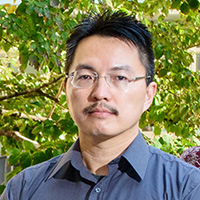
Assistant Professor
Mechanical Engineering and Mechanics
Han, who joined the College of Engineering faculty in 2014, worked as a 2nd lieutenant for military service from 1998 to 2000, and then as a patent engineer in industry before pursuing his PhD. Han has recently received a Coulter Foundation grant, a National Science Foundation grant, and a National Institutes of Health R21 grant, all supporting research on the regeneration of soft tissue in the knee.
PhD: The University of Texas at Austin
Lab: Biopolymer Microfabrication Lab
Research: His research experience includes polymeric micro/nano-fabrication, biomaterial design, tissue engineering, rapid prototyping, free-form fabrication, polymer microactuators and photonics.
Describe the work you do in your lab:
“We invent biopolymer scaffolds that can be loaded with stem cells or non-stem cells from humans or animals. We then allow these scaffolds to grow into a piece of new tissue, such as cartilage, bone, and skin. These scaffolds are being tested in Petri-dishes by themselves or being implanted into an animal’s body. In one of our projects, we are currently implanting a very special type of scaffolds into damaged cartilage of horses (that's right, horses running in a farm field). The goal is to heal the horses. If successful, this model can lead to human trial and become available for orthopedic surgery in about 10 years.”
Describe one of your favorite undergraduate courses:
“In MEM, I teach a class called Mechanical Vibration. That is my favorite class. Students in this class are trained to deal with things that shake, tremble, and produce sound. Being a classical music lover, I help students in a final project apply the knowledge from class to designing a string instrument: a guitar, lute, cello, or something like these.”
What is your teaching philosophy?
“I recognize and embrace the coming age of Big Data, AI, and Machine Learning. Due to these developments, academia will soon evolve into something very different from what I knew when I was a student. I want to teach my students to perform intellectual activities that cannot (cannot yet) be replaced by machine; namely, creativity. I start to do so perhaps by adding a little bit of art components into my class, such as in the design project in the Vibration class. After all, in the age of Leonardo Da Vinci, science, engineering and art were all from the same family; this might be the time for these fields to get back together again.”
X
Fei Lu
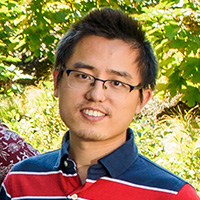
Assistant Professor
Electrical and Computer Engineering
Lu is one of the newest hires in ECE and has already received an important two-year grant from the Department of Energy, titled “Resonant Solid-State Breaker Based on Wireless Coupling in MVCD Systems.” Last summer, he and Dr. Hua Zhang (also of ECE) received the Prize Letter Award for 2018 in the journal IEEE Transactions on Power Electronics, the premier professional association for electrical engineering and related disciplines.
PhD: University of Michigan-Ann Arbor
Lab: Center for Electric Power Engineering
Research: Lu’s research focuses on the advanced power electronics system, specified on the wireless power transfer technology for the high-power electric vehicles and the low-power electronic devices.
What is your teaching philosophy?
“I am teaching a mixed class of power electronics for both undergraduate and graduate students. I have found two important aspects during my teaching. First, in the mixed class, the content should be balanced for different levels of students. For undergraduate students, they need to learn the fundamental knowledge in power electronics. For the graduate students, they focus more on the latest and new achievements in the area. Second, the laboratory teaching is also very important for students. They have been actively involved in the labs to conduct experiments, which can significantly enhance the teaching and learning process.”
X
Click on a professor for more on their wicked good research. From left: Ioannis Savidis, Maureen Tang, Matt Stamm, Vibha Kalra, Jennifer Atchison, Li-Hsin Han and Fei Lu.
It goes without saying, but we’ll say it anyway: the defining characteristic of a great university is its faculty. How could it be otherwise, when these scholars are in the classroom every day teaching, guiding, and nurturing the 21st century student? Our professors embody the ideal: they honor the gravity of their task and are remembered long after graduation for helping students find their way. The word ‘wicked’ comes to mind – in the sense of something really impressive: wicked as in exemplary, wicked as in accomplished, wicked as in hella good. Those featured here are just a few of the College of Engineering faculty members who have distinguished themselves as teachers and researchers.
There’s one more point to make about ‘wicked.’ In science, a wicked problem is one that is inherently unsolvable, but that has to be mitigated so its impact is less severe. We educate students who will not simply work as engineers in the future, but who will work as engineers on the world’s wicked problems. How do we do that? We have a little bit of wicked on our side, too: Ioannis Savidis, Maureen Tang, Matthew Stamm, Vibha Kalra, Jennifer Atchison, Li-Hsin Han, Fei Lu. Click on one of them for a description of their research, and to find out how good wicked can be.